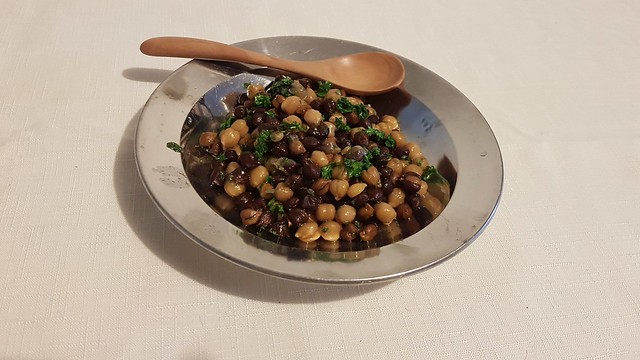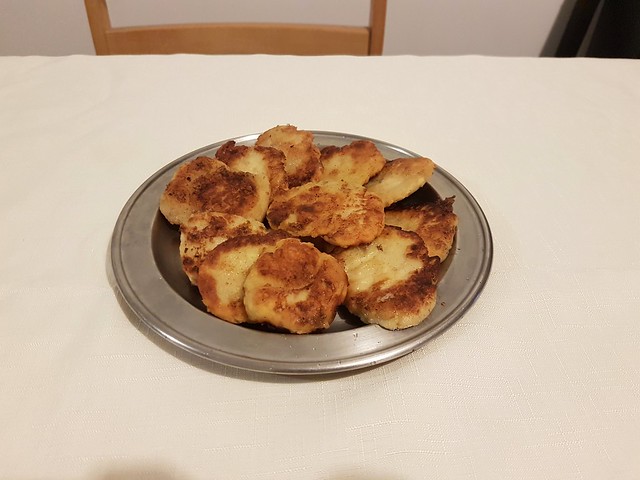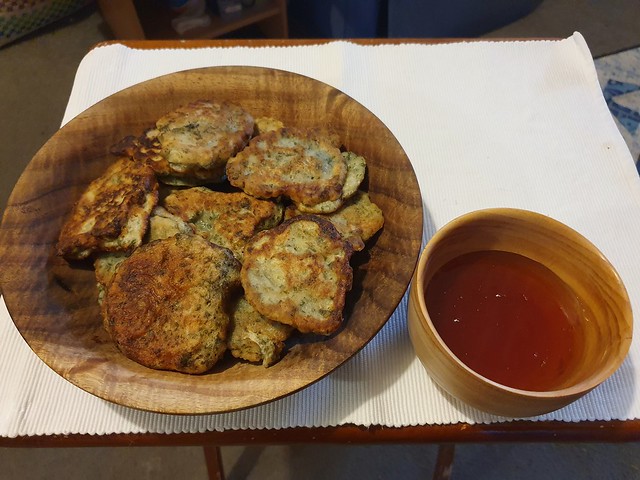White and red chickpeas, the latter being the most wholesome, are some of the healthiest vegetables you could find. To cook them take a ladleful of the red chickpeas and boil them with unsalted water with plenty of oil, and when they are cooked squeeze lemon juice over them… If lemon juice is not available, radish juice has more or less the same effect. The length of time chickpeas take to cook depends on the quality of the soil they were grown in. When you have some of the kind which take a long time to cook, leave them to soak all night long in a pot with some hot charcoal tied in a piece of coarse, clean linen. Next morning rinse the chickpeas well in tepid water and put them in a pan or earthenware pot with fresh water and salt… add some sage and rosemary, a moderate amount of oil and, for those who like it, two or three cloves of garlic.
Giacomo Castelvetro. The Fruit, Herbs and Vegetables of Italy. trans. Gillian Riley. p79.
About the Author and the Source
Giacomo Castelvetro, the son of a wealthy banker, was born in Moderno in 1546. He spent a great deal of his life travelling and teaching, having to flee to live with his uncle in Geneva when he was just seventeen. Giacomo’s uncle Ludovico lived on a simple diet of vegetables and fish, and this is thought to have greatly influenced Giacomo’s attitudes to food.
From 1592 until his death in 1616, Castelvestro lived in England and Scotland, and was apparently appalled at the meat-heavy diet consumed throughout Britain (Castelvetro p43). He began compiling The Fruit, Herbs and Vegetables of Italy in 1614, in an effort to convince the English to vary their diet. English cookbooks were starting to feature more dishes containing vegetables, but Castelvestro aimed to elevate the humble vegetable far more in the English diet. He dedicated the book to Lucy Russell, Countess of Bedford, in the hopes of securing her patronage, but he was unfortunately unsuccessful, and he died soon after finishing the book. Sadly, the book remained obscure for decades, and not until John Evelyn’s Acetaria: A Discourse on Sallets, published in 1699 would a cookbook again be devoted to vegetables, and the English diet start to include more vegetables.
******
This is a wonderful dish to serve at summer feasts (such as Lochac Twelfth Night), as chickpeas are easy to prepare and easy to eat. Castelvestro notes the noble ladies of Italy buy them directly from the peasant women who pick them in the summer, and eat them “for fun.” (p79).
I only became aware there were other varieties of chickpeas than yellow when I started to look at Italian cooking. Maestro Martino was particularly fond of the red ones, perhaps because of the health benefits suggested by Castelvestro. I’d never heard of red chickpeas before and I’d never seen them anywhere. Fortunately, I have an excellent Indian grocer nearby, and they had some (and their yellow chickpeas were cheaper and better quality than the ones I could get from the supermarket). If you can get different colours of chickpeas, it makes for a more visually appealing dish. Red chickpeas also have a slightly sweeter taste.
I am not sure of why you need a piece of hot charcoal in the water as the chickpeas soak. Having said that, there are brands of dried chickpeas I avoid because they just don’t cook as well, even if they’re soaked for hours. Perhaps I need to do some more experimentation with chunks of charcoal wrapped in linen! Castelvestro’s instructions also suggest two similar but different methods of cooking the chickpeas. I have chosen the second method, where extra ingredients are added to the cooking water to enhance the final dish; though this may apply only to the chickpeas that need special soaking.
Ingredients
| 50g dried chickpeas, either red, yellow or a mixture of the two |
| 12 sage leaves |
| 2 long sprigs rosemary |
| 3 cloves garlic, peeled |
| 40mL extra virgin olive oil |
| Juice of 1 lemon |
Method
- The night before, put the chickpeas to soak in at least four times the amount of water. If you are using different colours of chickpeas, you can soak them separately, but this isn’t completely necessary.
- Rinse the chickpeas well. You will find they have expanded considerably.
- Crush the garlic cloves, tear the sage leaves and strip the rosemary leaves from the sprigs.
- Put the chickpeas, garlic, sage leaves, rosemary and olive oil in a pot of cold water, and bring to the boil.
- When the water is boiling, reduce to a simmer and cook until the chickpeas have softened, stirring regularly. You will probably need to need to top up the water occasionally. The easiest way to check the chickpeas have cooked is to eat one.
- Drain the chickpeas and allow to cool. Before serving, pour the lemon juice all over the chickpeas and stir them well.
Notes
- It is well worth taking the extra time with dried chickpeas for this recipe (or just about any recipe involving chickpeas). Canned chickpeas taste different and have a slightly mushy texture, while reconstituted chickpeas have a much firmer texture, even after cooking. You can also add extra things to the cooking water (such as the herbs, garlic and oil used in this recipe) to alter the flavour.

Further Reading
Click on the links below to buy direct from The Book Depository.
(add to end of Book Depository link – ?a_aid=leobalecelade)
Castelvetro, Giacomo. The Fruit, Herbs and Vegetables of Italy.

